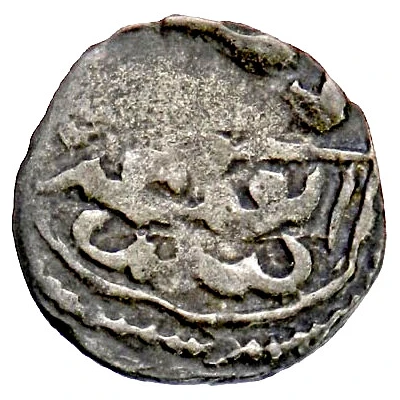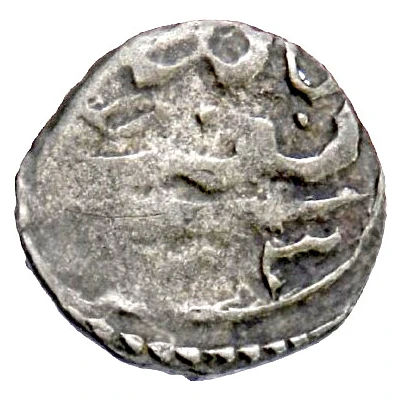


© Stephen Album Rare Coins
Buqsha - Hamud Abu Arish
1233 (1818) year| Billon | 0.75 g | - |
| Issuer | Sheikhdom of Abu ʽArish (Yemenite States) |
|---|---|
| Type | Standard circulation coin |
| Year | 1233 (1818) |
| Calendar | Islamic (Hijri) |
| Value | Buqsha (1⁄80) |
| Currency | Local Hammered Coinage (1802-1818) |
| Composition | Billon |
| Weight | 0.75 g |
| Shape | Round (irregular) |
| Technique | Hammered |
| Demonetized | Yes |
| Updated | 2024-10-09 |
| Numista | N#104381 |
|---|---|
| Rarity index | 95% |
Reverse
Date encircled
Script: Arabic
Lettering:
سنه
١٢٣٣
Translation: Year 1233
Comment
Possibly KM# 303 (or similar)According to Stephen Album: "The small city of Abu 'Arish, about 20 miles east of Jizan, was ruled by a local tribal sheikh, although like the coastal town of Jizan it was nominally under the Ottomans from the mid-16th century until 1917, though from time to time local sheikhs rebelled against the Ottomans. Although under the Wahhabi rule at the beginning of the 19th century, it was reclaimed by the Ottomans after Muhammad Ali Pasha's invasion of Nejd in AH1226/1810, but in AH1234/1818 it was seized by the Sulaymani Sharif's, only to be retaken by supporters of the Ottomans a few years later. This coin was probably struck during the 1810-1818 Ottoman "occupation", which more accurately meant that it was actually controlled by pro-Ottoman tribal leaders. The sheikhs struck their coins anonymously to protect their own position."
Interesting fact
One interesting fact about the Buqsha - Hamud (Abu Arish) 1233 (1818) coin is that it was made of Billon, which is an alloy of copper and silver. This was a common practice in the Middle East during that time period, as it allowed for the creation of coins that were more durable and resistant to wear and tear than coins made of pure copper or silver. The use of Billon in coinage also made it easier to produce coins with a consistent weight and value, as the proportion of copper to silver could be carefully controlled during the minting process.